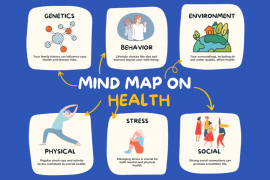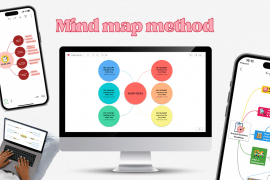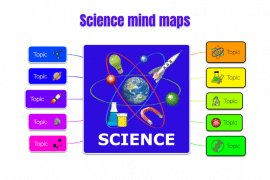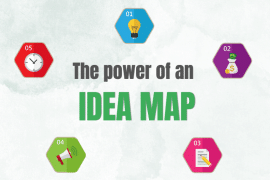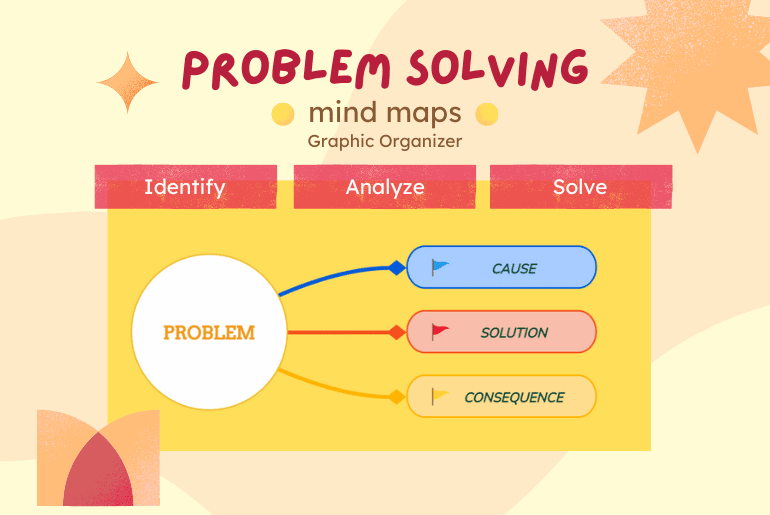
So what does a problem-solving mind map refer to? Well, when we think of mind mapping, we think of generating ideas or brainstorming. When you brainstorm ideas, it’s not about possible solutions; it’s about all the possibilities. The focus of a mind map is more on where to explore and find strategies. Yet with a stable framework, it can help to find solutions for complex problems.
This is yet another one of many mind map examples out there and one of the most efficient problem-solving strategies you can use. Mind maps are already powerful idea-generating tools to consider. They help with the complexities and chaos to get to the most efficient path.
It can be a particular problem or several problems where you’re trying to process the big picture. It helps to organize solutions that are hiding in the brain, whether those problems come from life or business. The structure of a problem-solving mind map slightly shifts, but the technique of mind mapping stays the same. Of course, it helps to understand how to see the big picture of how to solve a problem first.
Is mind mapping an efficient tool for problem-solving?
Short and long answer, a mind map is excellent for problem-solving. This is because it’ll have all the elements that are different in one place. The central idea instead is the actual problem, and the connections branch out. We now brainstorm ideas that are really there to point out the possible solutions.
If the problem is too complex, creating multiple simpler mind maps will help the brain to process possible solutions easier. A recent study shows how the brain can handle the essentials first against complex problems. This puts less stress on the brain and gives a better chance to solve the problem.
A mind map helps with the rest of the components of the study as well. You’re able to divide up the ideas and content, such as images or even a reference article. The benefit of creating a mind map is that central concept and base for all the detailed information. It all depends on how you use mind maps, to begin with.
How is a problem-solving mind map structured?
It’s a good idea to have the key skills required to make a normal mind map. Even before we get there, take a moment to do an exercise on paper. Write the problem down and try to connect or implement solutions throughout. You’ll quickly see the need to organize, and here you can stop and head back to your mind map software. It’s more just to see that structure is essential, as well as data and information collection.
Key skills include knowing typical structures, what main branches are, and mapping out the flows. Getting these key skills mean using a graphic organizer on a constant basis. Whether you make mind maps for business, creativity mind maps, or education mind maps, make sure to have the right level of experience. You want this before attempting mind mapping to find solutions to a simple or complex problem.
Once you get the key skills required, the structure of the problem-solving mind map starts out the same.
Here we begin with a hierarchical approach, where the main branches are the problems to address. The sub-branches are either ideas or solutions to the problems. It benefits from the creativity and brainstorming that comes with mapping a mind map.
You can also go with a radiant thinking approach, where you start with the problem in the center. As the central idea, the ideas and solutions will radiant from the center. It’s ok to put imaginative solutions as well as more practical ones as a mind-mapping technique.
Consider colors and symbols
It may be a good idea to color code the sub-branches and write down what each color means. Writing notes is a standard aspect of mind maps focused on solving a problem. Don’t be shy to use images in your mind maps. These images can be of an individual problem, such as a roadblock that represents an obstacle. You can use positive symbols for your mind mapping to show ideas or a solution.
Doing mind maps this way actually ends up making them much more fun to use. That means you’ll be more prone to map out everything that you need to solve.
Mind map templates for problem-solving
You can start creating your mind map from scratch and get inspiration from existing mind map examples, or you can use a predefined template. Here are the most used templates you can copy and edit anytime:
1. Problem solving mind map template
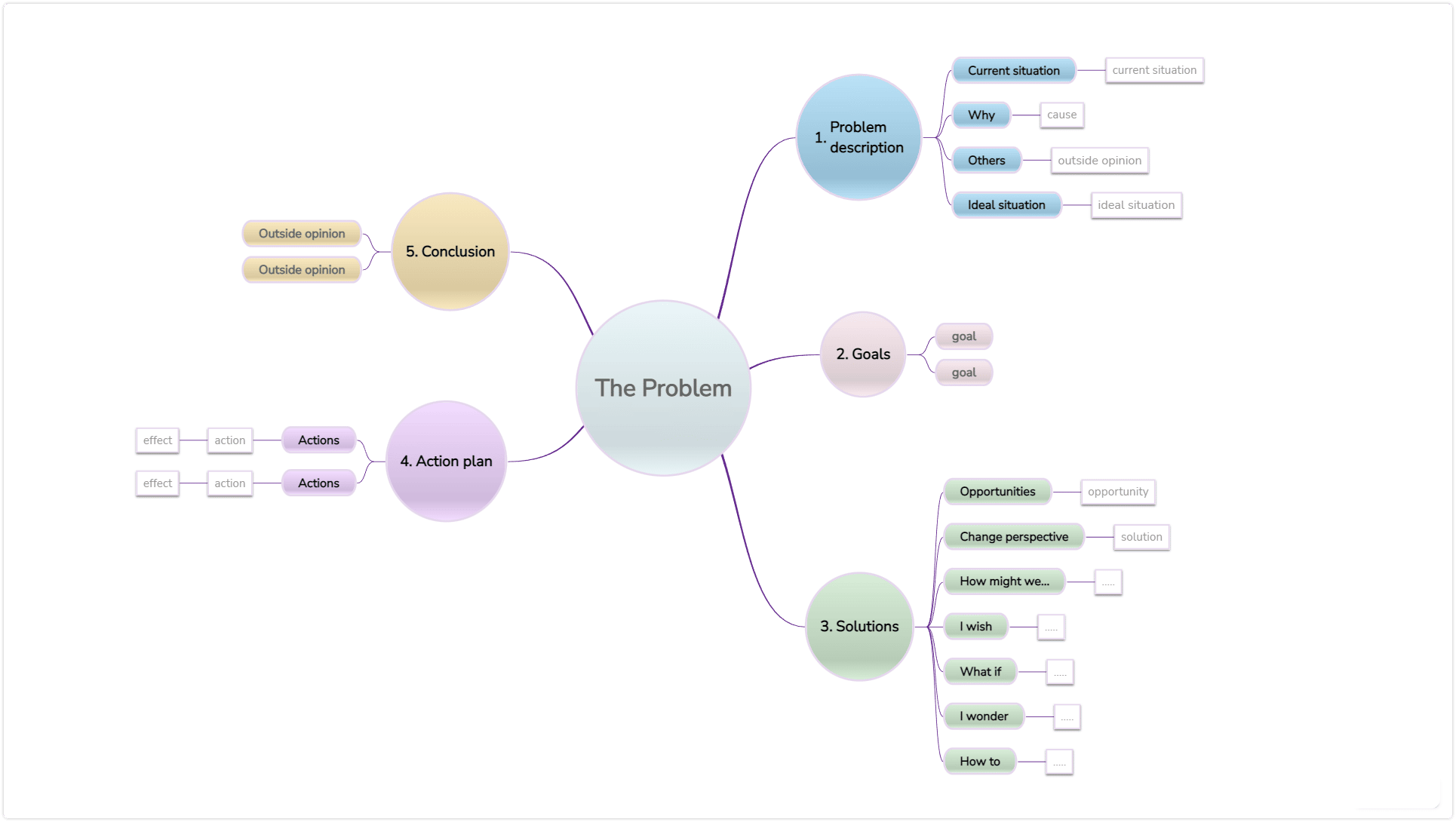
This mind mapping template helps you solve a problem following the 5 step strategy: describe the problem, set goals, identify possible solutions, make an action plan, and add conclusions.
2. Manage a problem
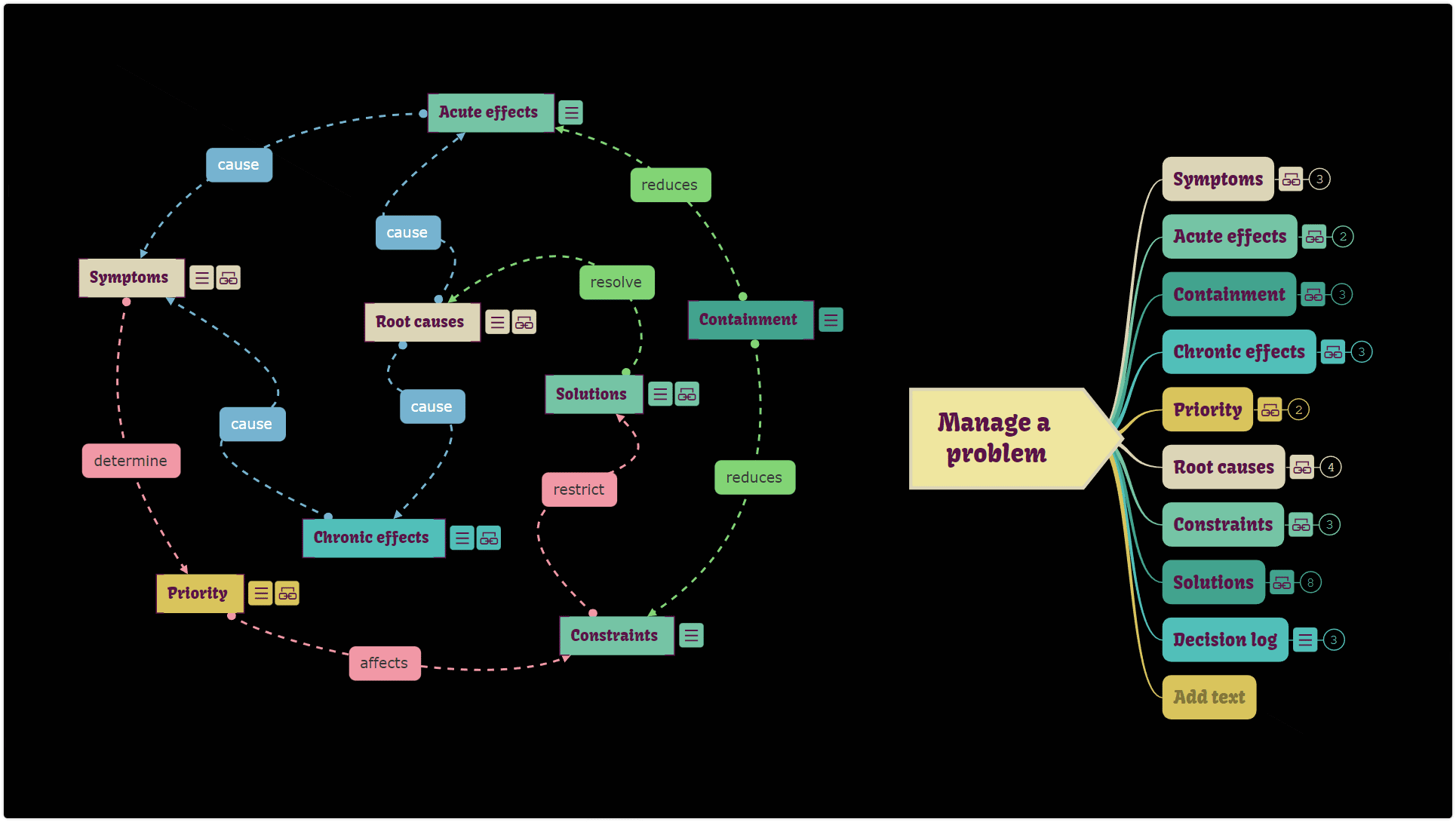
This mind map helps you identify all the information on how the elements of problem management interact with each other. It’s more suitable for complex problems.
3. 6 Thinking Hats
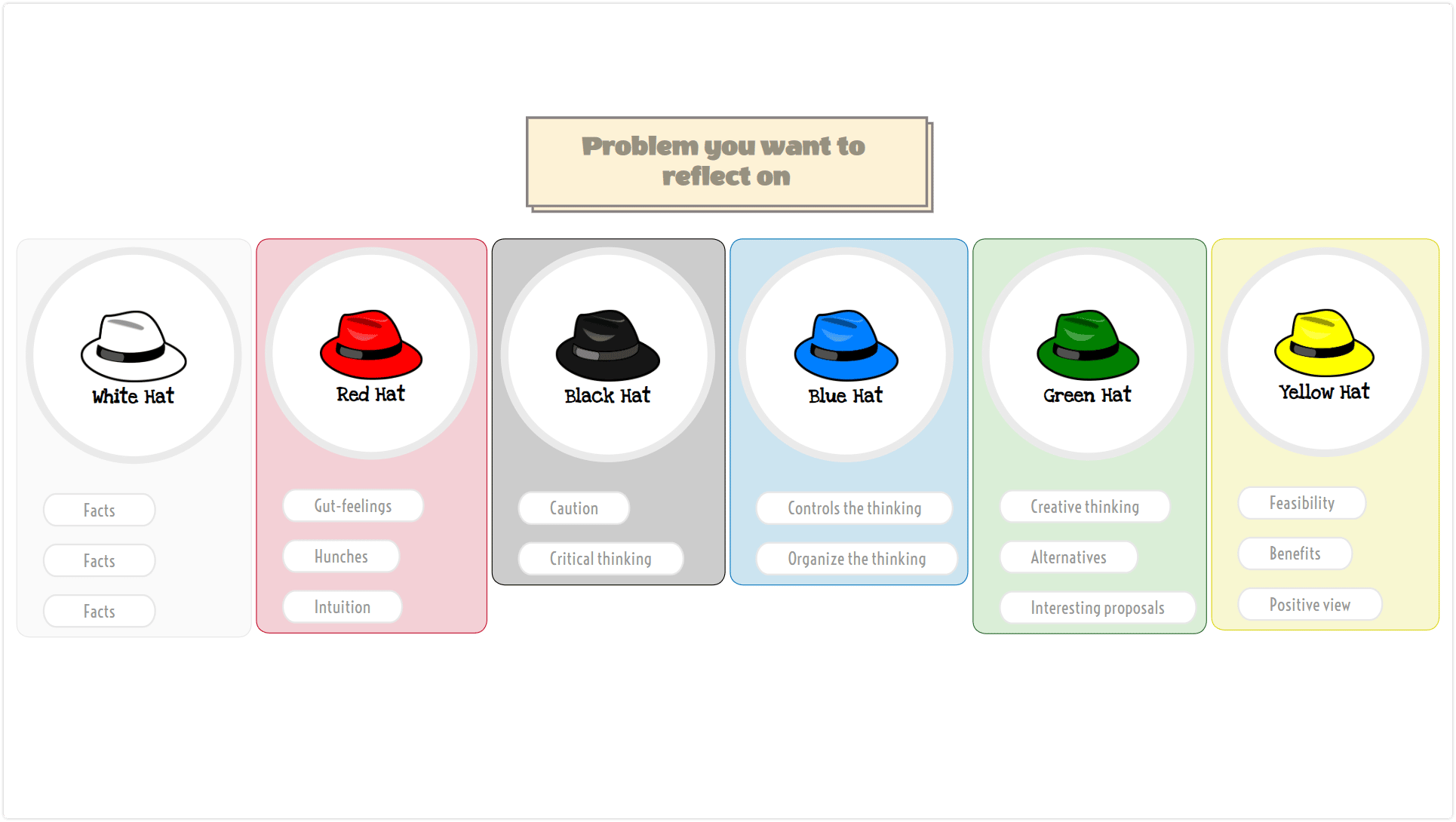
The 6 thinking hats template allows looking at a problem from multiple perspectives. This way, you get significantly higher chances of solving it more effectively.
4. 5-Whys Root Cause analysis
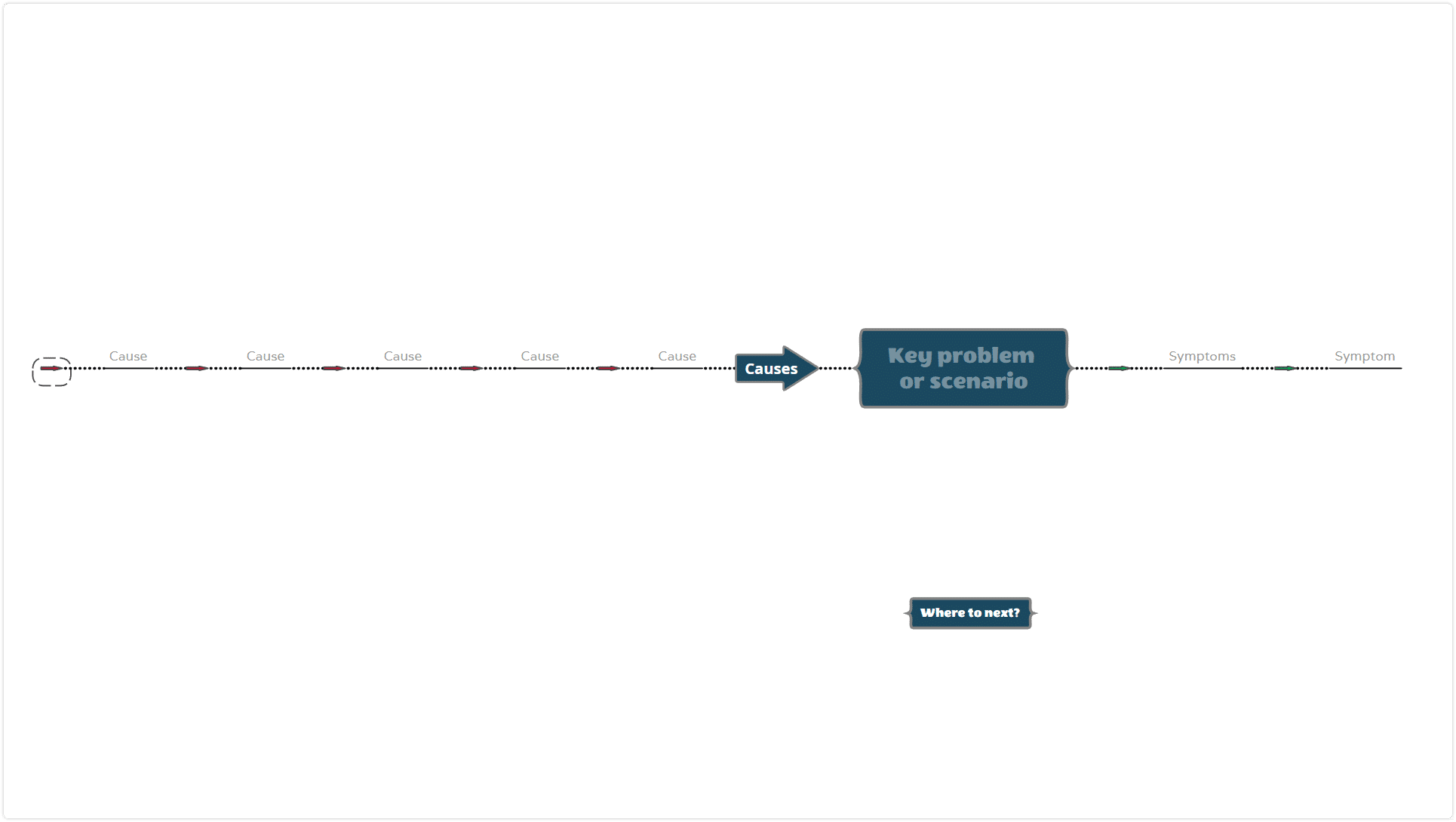
This template will help you find the reasons behind the obvious reasons and go back to the root of your problem.
5. Means-end analysis
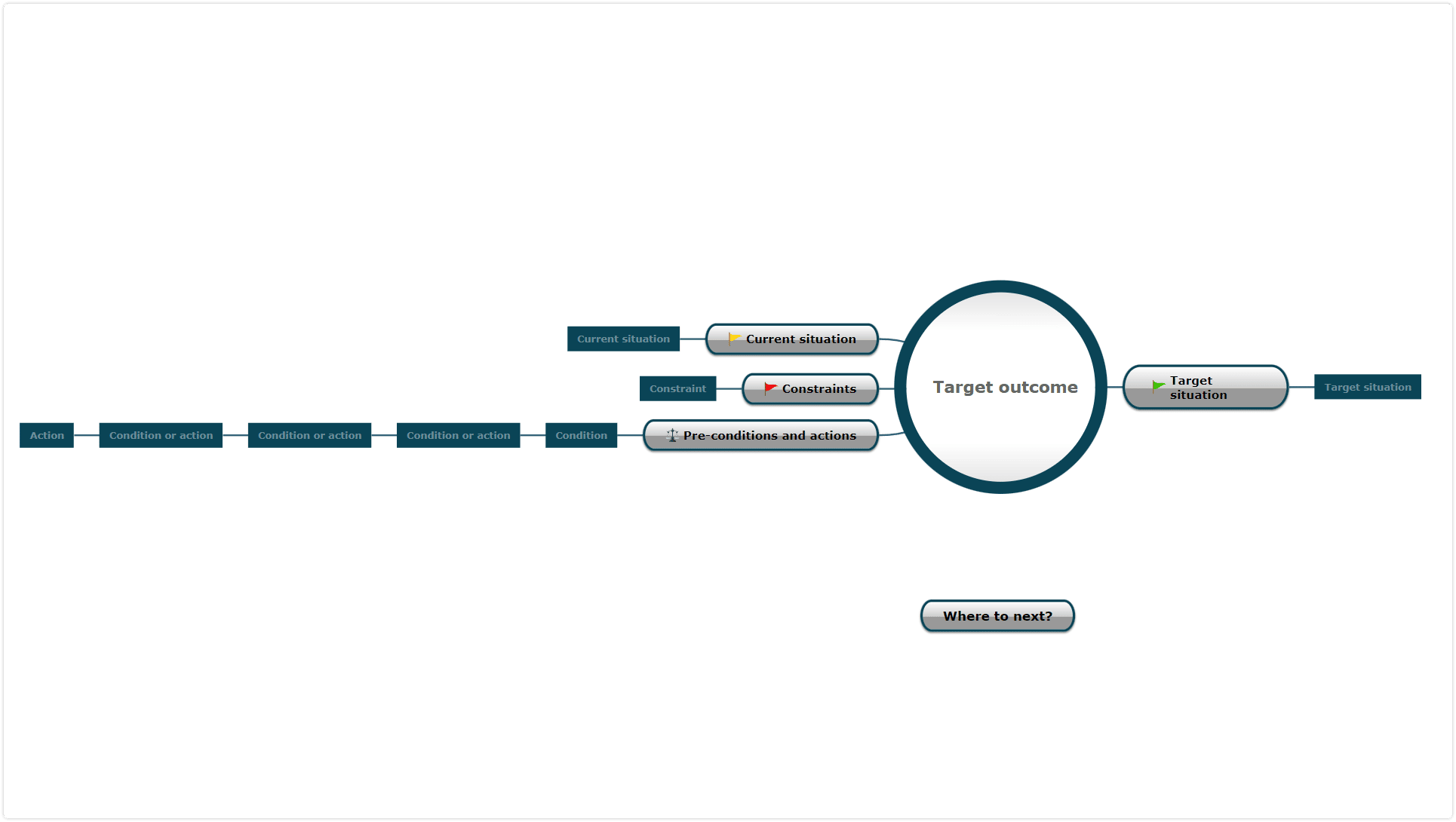
This is suitable for simple problems and has a similar backward process as the template above.
6. Fishbone diagram
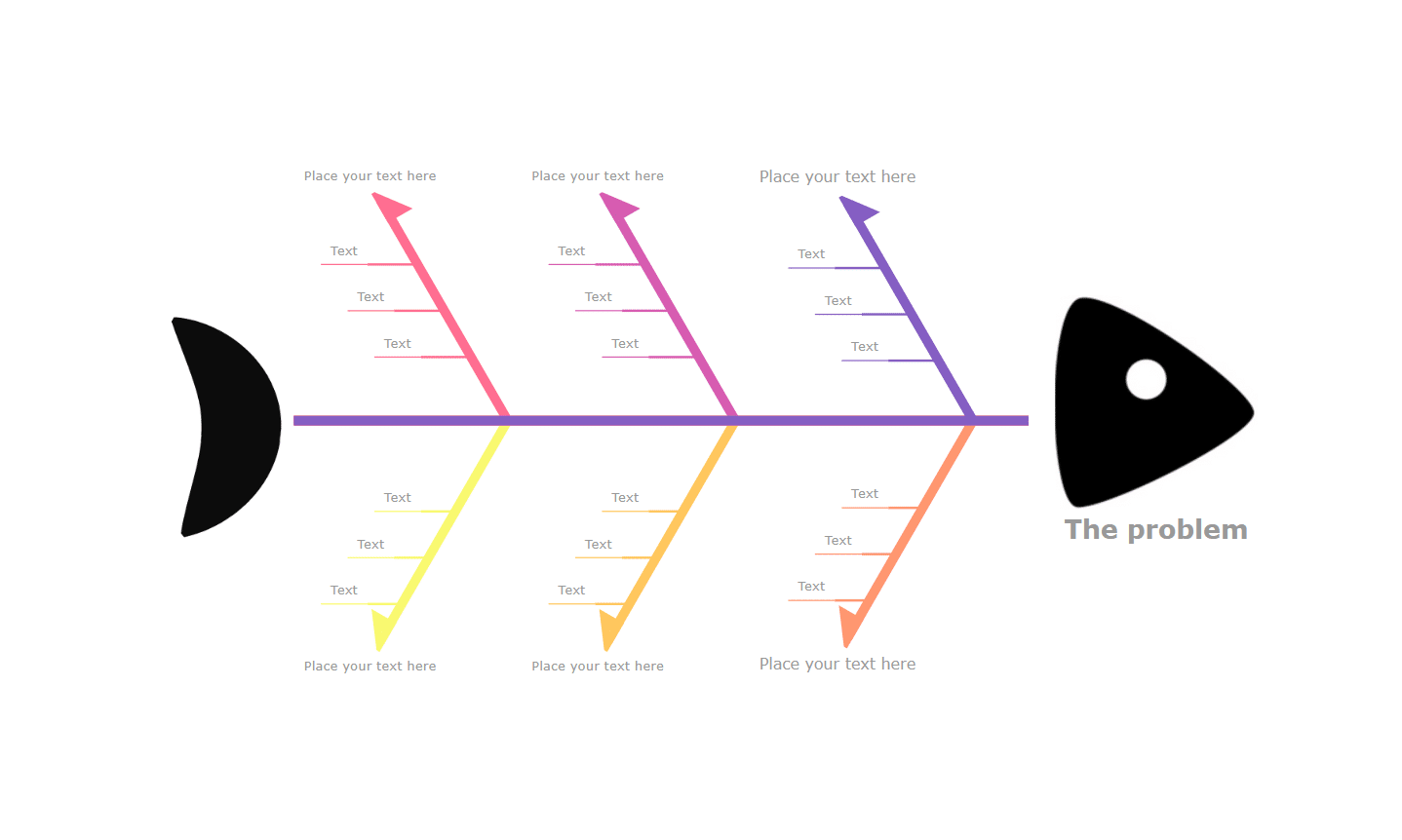
The fishbone diagram is a fantastic example of a mind map for kids, and adults can also use it.
7. Problem description toolbox
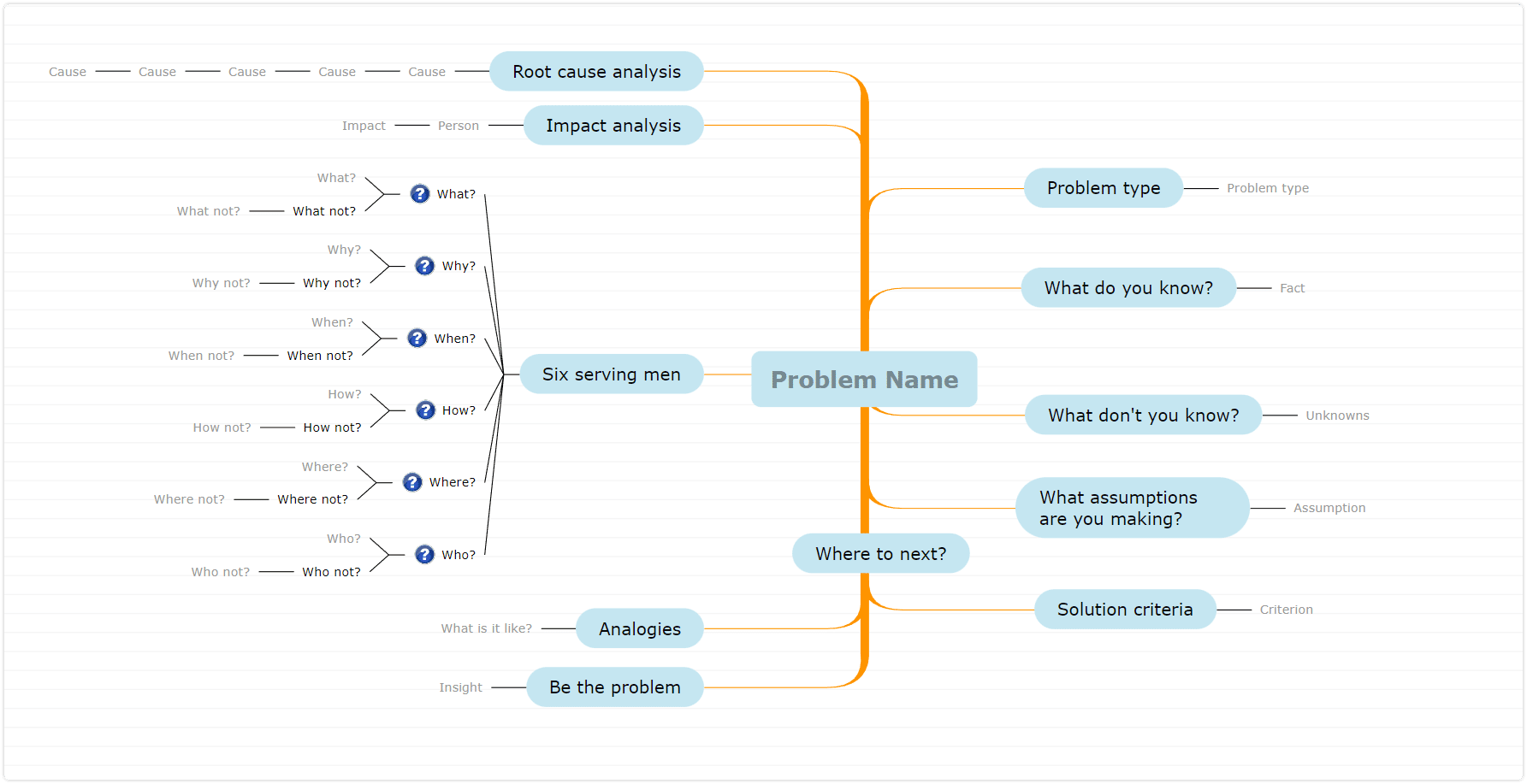
Before starting to solve a problem, it is essential to describe and analyze it constructively and comprehensively. That is exactly what this template will guide you to do.
Mind mapping a problem is not a one-time solution
Problem-solving is typically an iterative approach, and that means your mind map will be a dynamic tool. That’s why it’s always best to use mind map software when possible so as to be able to keep track of everything. Whether you’re using it for problem-solving on your business plan or for making life choices, you want it fresh. Even if a particular problem has been resolved, adding on a new creative problem keeps the brain working to find a solution.
Don’t forget to take time to get fresh air once in a while to clear your head. Your daily life problems you’re trying to resolve will still be there. A clear mind will help bring in more ideas and eventually the desired result you were looking for. Problem-solving isn’t always meant to be easy. Mind maps can only be effective at problem-solving when you’re fresh as well.
Use the right mind-mapping tools
When you are creating a mind map for problem-solving, you want to start with an example of an excellent mind map. Mindomo helps you not only with the right starter example but with one ready to handle a problem.
It comes with tools to help organize your thoughts, focus on the moment’s problem, and show all the possibilities. You can place problems on one end and solutions on the other. Or you can map out the whole end-to-end route from problem to solution. Either way, it will help you solve problems.
Get your problem-solving hat out and be amazed at how mind-mapping software removes the difficulties of getting started. Feel free to try out our flexible tool and simple solution today. You’ll find the answer to your complex problems in no time.
Keep it smart, simple, and creative!
The Mindomo Team



